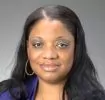On February 8, 2013, the Federal Circuit, sitting en banc, heard oral arguments in CLS Bank International v. Alice Corporation Pty. Ltd., No. 2011-1301, which vacated a panel opinion from the Federal Circuit, CLS Bank Int'l v. Alice Corp., 685 F.3d 1341 (Fed. Cir. 2012), vacated, 484 Fed. Appx. 559. The current appeal arises from a grant of summary judgment from the U.S. District Court for the District of Columbia that the asserted claims of Alice Corporation's (Alice) patents are invalid for failing to claim patent-eligible subject matter under 35 U.S.C. § 101, CLS Bank Int'l v. Alice Corp., 768 F. Supp. 2d 221 (D.D.C. 2011).
Questions during oral argument highlighted a sharp schism in the Court over the test and perspective for the patent eligibility of computer-implemented inventions. The judges focused on several issues, including the extent to which claim limitations drawn to generic computer hardware affect patent eligibility; the extent to which recitation of a process, system, or computer-readable media affect patent eligibity; whether to consider the broader inventive concept embodied by the claims; and what the definition of an abstract idea is. For example, counsel for CLS Bank International (CLS Bank) was repeatedly questioned by Judge Kimberly Moore about whether certain claims reciting specific computer hardware were merely abstract ideas. Counsel for Alice was questioned by Judge Timothy Dyk about whether the claims would foreclose all implementation of the end-of-the-day netting method embodied by the claims. Based on the division in the questioning, it is possible that the Court's en banc opinion may be divided and could result in concurring and/or dissenting opinions.
While the Federal Circuit's decision is likely to provide additional guidance beyond the patent-eligibility decisions in Bilski and Mayo, further resolution may need to come from the U.S. Supreme Court. (For a more detailed analysis of the Bilski decision, see Foley's Legal News Alert here, and for a more detailed analysis of the Mayo decision, see Foley's PharmaPatents article here and Personalized Medicine Bulletin here.)
The Case to Date
Alice is the owner of several U.S. patents that relate to methods, systems, and computer products for utilizing a trusted exchange institution to reduce settlement risk when parties are exchanging obligations. CLS Bank operates in the foreign exchange market and operates a global multicurrency cash settlement system that is used to reduce settlement risk. In May 2007, CLS Bank filed a suit against Alice seeking a declaratory judgment that the patents held by Alice were invalid, unenforceable, or otherwise not infringed by CLS Bank. After cross-motions for summary judgment, the U.S. District Court for the District of Columbia concluded that the claims of Alice's patents were directed to patent-ineligible subject matter and granted CLS Bank's motion for summary judgment.
Alice appealed the district court's invalidity decision and a split Federal Circuit panel of Judges Linn, O'Malley, and Prost reversed. In an opinion authored by Judge Linn, the majority concluded that Alice's patents claimed patent-eligible subject matter and were not directed to abstract ideas. According to the opinion of the majority, "when—after taking all of the claim recitations into consideration—it is not manifestly evident that a claim is directed to a patent-ineligible abstract idea, that claim must not be deemed for that reason to be inadequate under § 101." CLS Bank Int'l v. Alice Corp., 685 F.3d at 1352, vacated, 484 Fed. Appx. 559. Judge Prost dissented and argued that the majority's opinion runs counter to recent Supreme Court reversals regarding § 101 in Mayo and Bilski. CLS Bank filed the motion for the instant rehearing en banc on August 22, 2012, which was granted on October 9, 2012. (For a more detailed recap of this case, see Foley's Personalized Medicine Bulletin's discussion here.)
The Oral Hearing
The Federal Circuit requested that the parties focus on the two issues: (1) what test should be used for determining if a computer-implemented invention is a patent-ineligible abstract idea; and (2) does it matter whether the invention is claimed as a method, system, or storage medium for § 101 purposes?
With respect to the Federal Circuit's first issue, the questioning focused primarily on defining an abstract idea and how or when a computer, when combined with a potentially abstract idea, would result in a patent-ineligible claim. Counsel for CLS Bank, Mark Perry, defined the test as that which can be performed in the mind or just with a pencil and paper. Counsel for Alice, Adam Perlman, defined the test as whether the claim, as a whole, is significantly more than just an abstract idea. Counsel representing the USPTO, Nathan Kelley, defined the test as how the computer is used in the claim: "[I]s it inseparable from the claimed abstract idea or is it simply added on to the claim?"
Questioning opened with Judge Pauline Newman posing the question of how one knows what an abstract idea is to Mr. Perry for CLS Bank. Judge Newman would later reiterate her question to Mr. Kelley, in an attempt to define when "one moves from the abstract to the concrete." Judges Moore and Linn focused on the specific hardware elements recited in several claims, which could reflect a view that patent eligibility is measured on a claim-by-claim basis. The questioning suggested that the recitation of physical components to form a special purpose computer may be sufficient.
Judges Dyk and Reyna focused on the breadth of the claims and whether there was a way to perform the end-of-the-day international standard netting method or idea without infringing the method claims. Counsel for Alice responded by emphasizing that the claims only claimed a particular method and that other methods may be used. Mr. Perlman distinguished a basic claim of minimizing risk using a computer, which could be an ineligible abstract idea, from the specific method claimed.
Regarding the Federal Circuit's second issue, whether the invention is claimed as a method, system, or storage medium has any impact on the § 101 analysis, it appeared that most judges and CLS Bank agreed that the form did not matter. Counsel for Alice seemed to take the position that system claims, while not treated differently, would be difficult to be considered patent ineligible. The questions posed by Judges Moore and Linn suggested that claims with significant hardware or tangible elements may be difficult to be considered ineligible under § 101 as abstract ideas.
Counsel for the USPTO, Mr. Kelley, took the position that there is no clear bright-line test for patent eligibility, but, in the context of computer-implemented inventions, the question is how the computer is working in the claimed invention. When asked about the applicability of the special-purpose computer of In re Alappat, 33 F.3d 1562 (Fed. Cir. 1994), Mr. Kelley responded that the combination of a general purpose computer with software to create a special-purpose computer, alone, is no longer patent eligible in view of Bilski and Mayo. In response, Judge Moore questioned whether Mr. Kelley effectively said that software patents were dead. Mr. Kelley clarified his position that adding a general-purpose computer to an abstract idea is not patent eligible. Mr. Kelley concluded by arguing that merely because an abstract idea is behind the invention does not answer the patent-eligibility question; rather, what answers the question is what is claimed and how the claimed parts work together as a whole.
Conclusion
Predicting the Federal Circuit's decision based on the
questions asked at oral argument can be difficult, but it does
suggest a split between judges who appear to favor a broad §
101 standard consistent with the panel's decision versus those
who appear to believe that the Supreme Court has mandated a more
exacting § 101 standard. Regardless of the outcome here, it
seems likely this case may proceed up to the Supreme Court,
particularly if the Court adopts a standard that appears to be in
tension with the Supreme Court's prior decisions.
As evidenced by the number and significance of the amici
weighing in on this case, the en banc decision may not only have an
impact on existing intellectual property rights, but also will
likely affect current and future patent strategies, particularly in
software and other high-tech fields. For example, amici such as
International Business Machines (IBM) Corporation, the Intellectual
Property Owners (IPO) Association, Google Inc., and even the USPTO
weighed in on this case.
The content of this article is intended to provide a general guide to the subject matter. Specialist advice should be sought about your specific circumstances.


